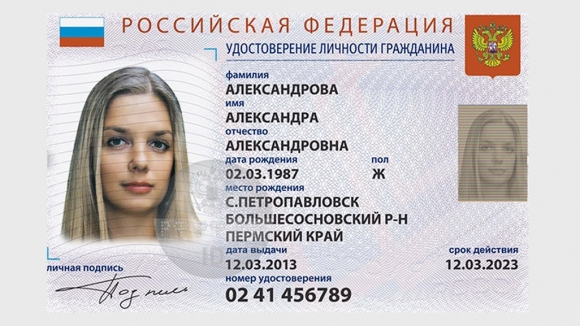Electronic passport may start issuing Russians this summer

E-Passport Project
New information on the implementation of the project of a modern system of identification of citizens came from the Ministry of Communications. The head of the ministry, Nikolay Nikiforov, sent out a presentation to the large Russian banks, from which it clearly follows that the electronic passport should contain the functions of a payment card. And last week, he said that the ministry was already ready to start issuing electronic passports as early as July 1, and even suggested using the Crimea, Sevastopol, Krasnodar Territory and Rostov Region as experimental regions.
The idea of a universal electronic identifier of the citizen took shape in the government in 2010. Initially it was assumed that the universal electronic card ( UEC ) will contain all the possible information about a citizen and will replace a passport in the future.
At the moment, the project of this card has been implemented, but it is developing very slowly - due to the fact that the advantages of owning such a card are completely unclear. The card contains a citizen's identification data, a qualified electronic signature and support for the PRO100 payment system. True, the electronic signature is not universal (it can only be used on the public services portal), the payment system does not work everywhere, and this card is not an identity card.
')

How is the UEC project developing?
Now it is supposed to start producing electronic passports that will replace both morally outdated paper and underdeveloped UEC. Passport information (name and photo of the owner, his gender, date and place of birth, date of registration and ID number) will be printed on the plastic card. At the request of the owner, his TIN and pension insurance card number will also be printed on the electronic ID. The card will be present electronic chip with the ability to contactless reading. Apparently, it is planned to support the national payment system (Russian rival Visa and MasterCard).
The ministry in its presentation indicates that, in addition to the data plotted on the card, data on registration by place of residence / stay (FMS data), civil registry office data, military registration data, blood type, biometric data (photo and fingerprints), as well as a qualified electronic signature for the “implementation of legally significant actions”. The presentation noted that such an electronic passport “allows, in the future, to ensure verification of a citizen’s identity card (ULG) in the territory of friendly countries.”
Source: https://habr.com/ru/post/356424/
All Articles